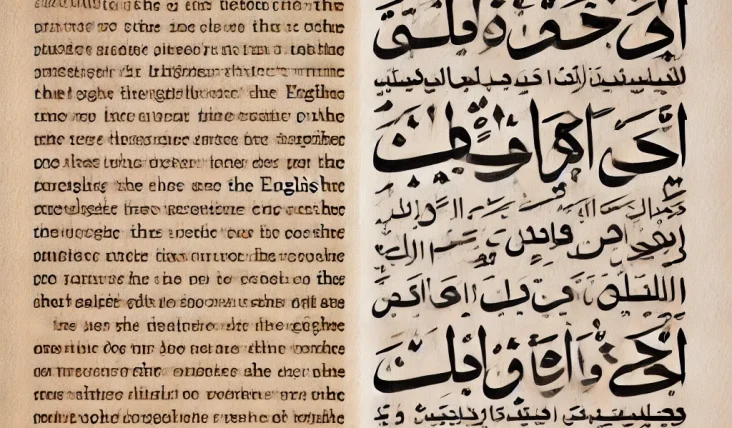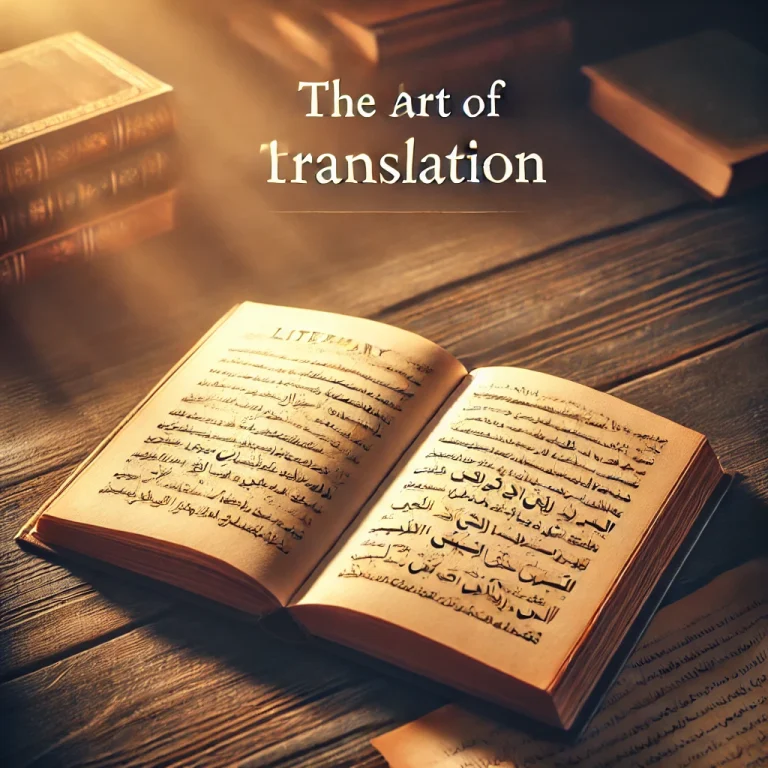In the ever-evolving world of literature, translation serves as a bridge connecting cultures, ideas, and artistic expressions. Translating literary texts goes beyond simple word-for-word replacement—it’s an art form that turns words into universal masterpieces. From poetry to novels, translators breathe new life into works, ensuring that the original voice, emotion, and style shine through in a new language. Whether translating from English to Arabic or any other language pair, the act of literary translation carries profound cultural significance and presents unique challenges. As more platforms and technologies emerge, literary translators continue to find innovative ways to overcome these barriers.
Translating Literary Texts: Crafting Masterpieces
When considering translating literary texts, one must acknowledge that literature is more than just words on a page. Every text holds a depth of meaning, tone, and nuance that cannot simply be transferred from one language to another without careful attention. Translators must embody both the technical skills of a linguist and the creative artistry of an author. Their task is to preserve the essence of the original work while ensuring it resonates just as powerfully with a new audience. In fact, literary translators are often referred to as co-creators of the translated masterpiece.
This process involves decoding the subtext, the rhythm of the prose, and even the emotional undertones that define a literary piece. It is no wonder that some of the most celebrated works of world literature have gained prominence due to exceptional translation.
The Challenges of Translating Literary Texts
Literary translation is not without its hurdles. One of the biggest challenges is handling language-specific nuances. Each language has its own idiomatic expressions, metaphors, and cultural references that are difficult to transfer directly into another language. For instance, in English to Arabic literary translation, translators often face the challenge of dealing with vast differences in grammar, word structure, and syntax.
Cultural differences also play a significant role. A phrase or concept that makes perfect sense in one culture may have no equivalent in another. As a result, translators must adapt or transform parts of the text, sometimes straying from the literal meaning to maintain the original’s intention and impact.
English to Arabic Literary Translation
Translating texts from English to Arabic presents both challenges and opportunities. Arabic, known for its poetic and rhythmic beauty, offers a unique platform for literary expression. However, achieving a balance between preserving the original’s essence and adapting it to the rhythmic and figurative nature of Arabic is often difficult.
For example, when translating metaphors or idiomatic phrases from English, one must be cautious not to disrupt the delicate balance of meaning and aesthetic in Arabic. Translators also need to navigate complex grammatical rules that differ drastically from English. Despite these difficulties, successful English to Arabic translations have enriched both literary traditions by introducing classic English works to the Arab-speaking world.

The Role of Literary Translation in Culture
Literary translation holds a unique position in global culture. Through translation, works like Shakespeare’s plays, Gabriel García Márquez’s magical realism, and Naguib Mahfouz’s stories reach readers worldwide, allowing them to experience the beauty and diversity of literary traditions across the globe. Translating literary texts is not just about linguistic transfer; it’s about cultural exchange.
These translations break down barriers, fostering cross-cultural understanding and appreciation. They allow readers to explore foreign cultures and perspectives without leaving their own. In a world that is increasingly interconnected, literary translation is vital for maintaining global cultural heritage.
Literary Translation vs. Other Forms of Translation
Many people wonder how literary translation differs from other types of translation, such as technical or business translation. In essence, literary translation demands a creative touch. While technical translation focuses on accuracy and clear communication of facts, literary translation requires the translator to capture the mood, style, and intent of the original author. Translators often face the task of conveying abstract ideas, emotions, and artistic expressions, a task far removed from the precision of technical translation.
Unlike other forms of translation, literary works invite subjective interpretation, leaving room for multiple correct versions depending on the translator’s perspective.
Famous Examples of Literary Translation
Several renowned works of world literature have gained global recognition through exceptional translations. The epic translations of The Odyssey into various languages, for instance, allowed readers from different cultures to enjoy Homer’s timeless stories. More recently, Haruki Murakami’s works have reached an international audience through careful, sensitive translations that preserve the dreamlike qualities of his writing.
Translators like Gregory Rabassa and Edith Grossman have become as revered as the authors they translate, proving that their work is not just about linguistic conversion but about recreating a new masterpiece in another language.
The Art Behind English to Arabic Literary Translation
The complexity of English to Arabic literary translation is evident when we consider the linguistic and cultural differences between the two languages. Arabic is a language rich in expression, and its classical form is deeply tied to history, religion, and culture. Translators working from English to Arabic must be experts not only in both languages but in the cultural contexts from which the works originate.
A successful translation honors the original while embracing the unique beauty of Arabic. This can mean adjusting metaphors, tone, and even sentence structure to fit Arabic’s literary traditions.

The Importance of Tone and Style in Literary Translation
One of the most difficult aspects of translating literary texts is preserving the original author’s tone and style. Whether it’s the whimsy of children’s literature or the gravitas of epic poetry, every author’s voice is unique. A good literary translator can mimic this voice while rendering the text in a new language.
For instance, capturing the wit and sarcasm of Jane Austen’s novels in Arabic requires deep cultural understanding and linguistic skill. The goal is to evoke the same emotions in the reader, regardless of the language.
Popular Literary Translation Sites
In today’s digital world, many platforms and websites have emerged to assist with literary translation. Literary translation sites such as ProZ.com, TranslatorsCafe, and TextMaster provide access to expert literary translators who specialize in different languages and genres. These platforms allow authors and publishers to connect with experienced translators who can bring their works to life in other languages.
When choosing a platform, it’s important to consider the specific expertise of the translators and their familiarity with the literary traditions of both the source and target languages.
Conclusion
Translating literary texts is an art form that requires a deep understanding of language, culture, and artistic expression. Whether working from English to Arabic or any other language pair, literary translators play a crucial role in bringing the world’s greatest stories to new audiences. By carefully preserving the tone, style, and emotion of the original, these translators turn simple texts into masterpieces, ensuring that literature continues to transcend linguistic barriers.
FAQs
Literary translation focuses on capturing the artistic expression, tone, and style of the original work, whereas other types of translation prioritize factual accuracy.
The main challenges include cultural differences, idiomatic expressions, and maintaining the author’s unique voice and style in the new language.
It helps bridge cultural gaps and allows Arabic-speaking audiences to experience significant works of world literature.
These sites connect authors and publishers with professional translators who specialize in literary works and specific language pairs.
While AI can assist with simple translations, it struggles to capture the nuance, tone, and artistic expression required for literary translation.
It’s important to have a deep understanding of both languages, respect cultural differences, and maintain the original’s tone and emotional depth.


